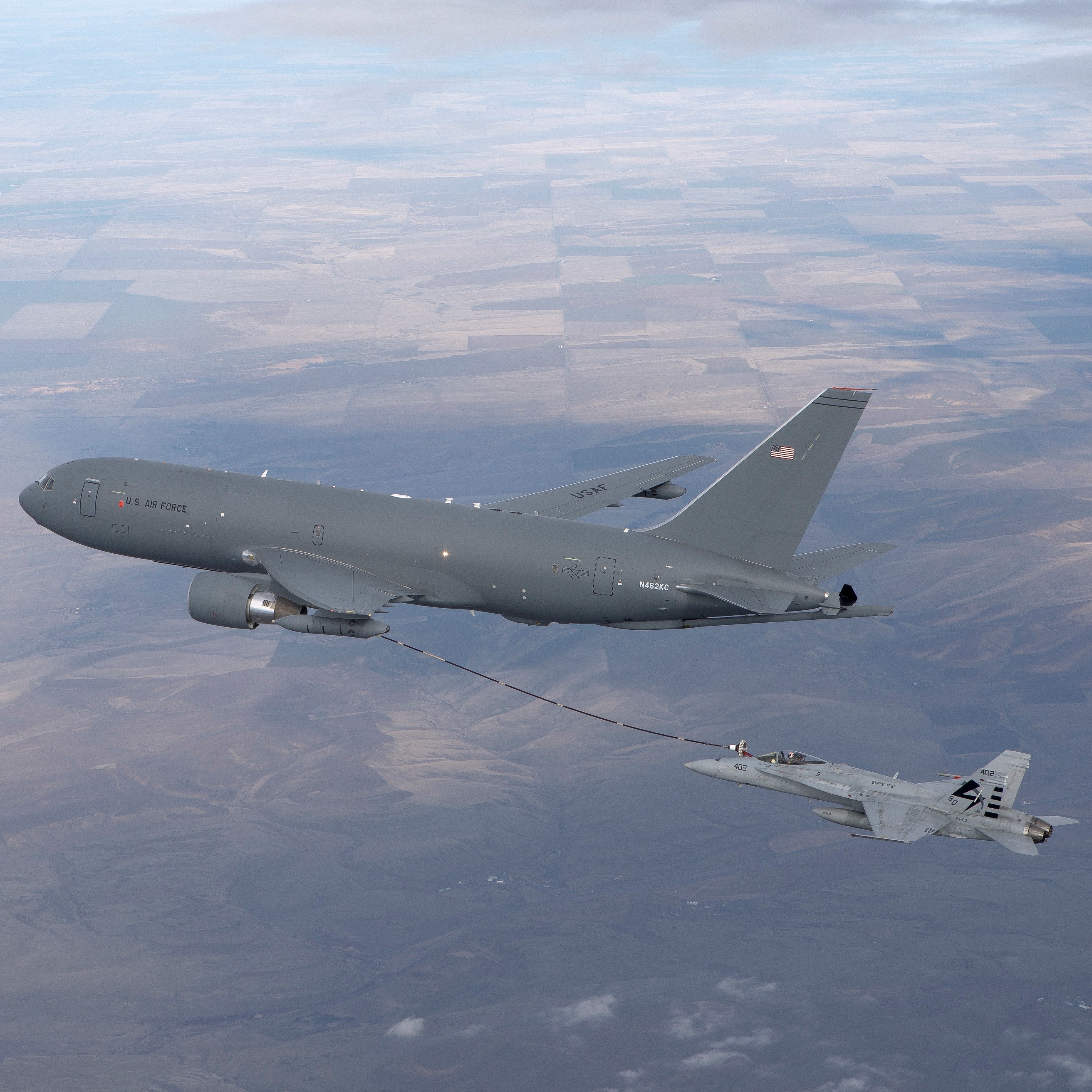
On Friday, Boeing Co. (NYSE: BA) announced that it had on Wednesday successfully refueled a U.S. Air Force F/A-18 fighter plane in flight. This was the second test of the new tanker’s refueling capability and there will be at least four more tests of the tanker’s ability to fuel a total of six types of aircraft.
If the aircraft can pass all six tests, Boeing will have reached a point in the development of the new plane when the Air Force will formally approve the beginning of production, a benchmark known as Milestone C. Anticipating that approval will be received, Boeing has been building production tankers on its own to make up for delays that have wiped out the slack originally built into the schedule. The Milestone C decision to begin production is supposed to be made in April, following successful completion of all flight tests.
This second refueling flight tested the flexible hose and drogue systems. The KC-46A has three such systems, one on each wingtip and one on the plane’s centerline. The tanker also has a rigid boom refueling system that was successfully tested in late January.
Additional tests of the rigid boom system will be conducted with the Air Force C-17 transport and the Air Force A-10 Thunderbolt (Warthog), while the AV-8B Harrier attack jets will test the flexible-hose refueling system.
Under the terms of Boeing’s contract with the Air Force, 18 operational tankers are due to be delivered by August 2017. A total of 179 KC-46A tankers are expected to be built to replace the fleet of KC-135s and KC-10s that are decades old.
Boeing’s stock price dropped to a new 52-week low this past week following a report that the U.S. Securities and Exchange Commission (SEC) is investigating the company’s program accounting method. The stock closed up about 0.2% on Friday, at $108.63 in a 52-week range of $102.10 to $158.83.
Get Ready To Retire (Sponsored)
Start by taking a quick retirement quiz from SmartAsset that will match you with up to 3 financial advisors that serve your area and beyond in 5 minutes, or less.
Each advisor has been vetted by SmartAsset and is held to a fiduciary standard to act in your best interests.
Here’s how it works:
1. Answer SmartAsset advisor match quiz
2. Review your pre-screened matches at your leisure. Check out the advisors’ profiles.
3. Speak with advisors at no cost to you. Have an introductory call on the phone or introduction in person and choose whom to work with in the future
Thank you for reading! Have some feedback for us?
Contact the 24/7 Wall St. editorial team.
